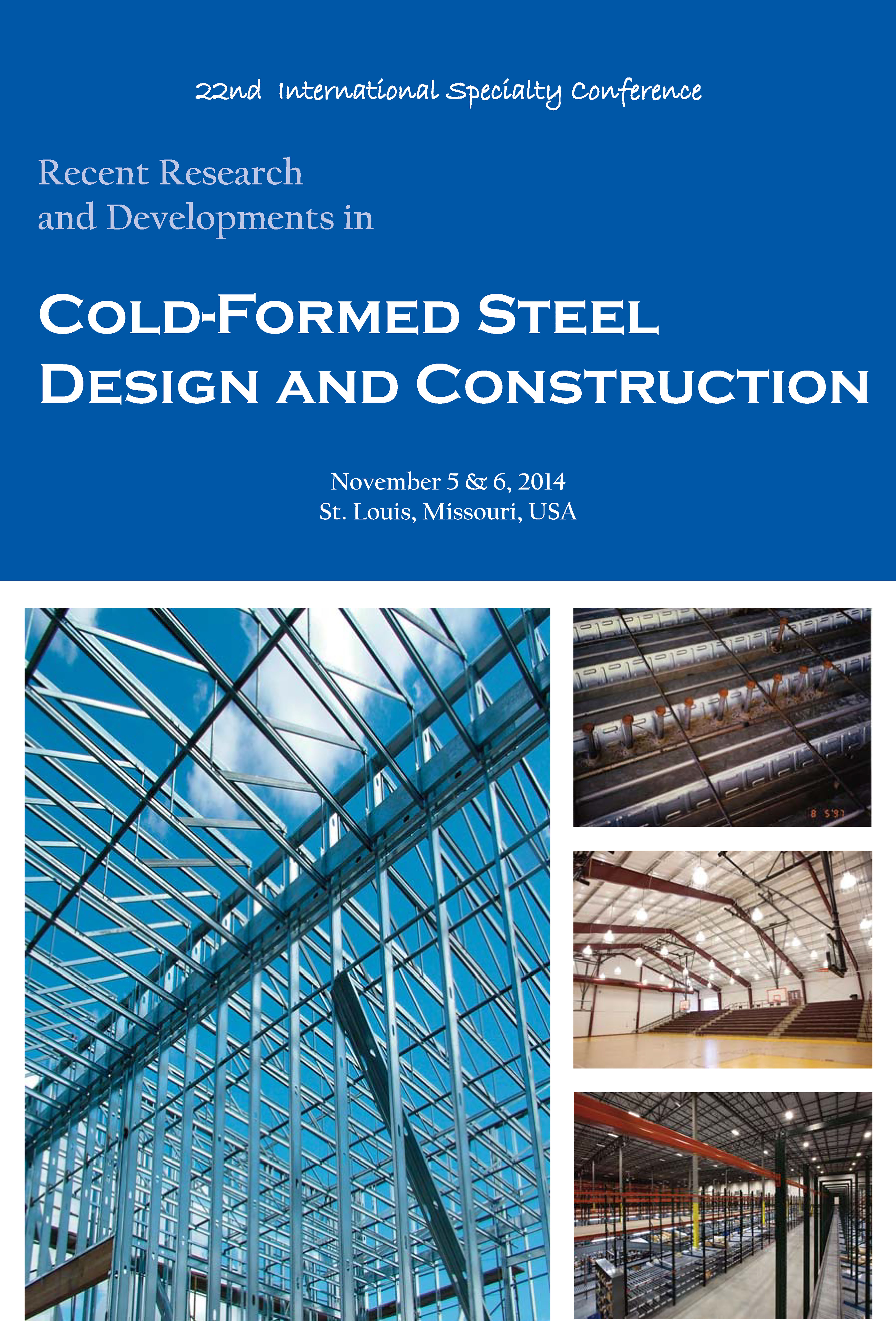Session Dates
06 Nov 2014
Abstract
Cold-formed steel trusses are a popular form of construction for light-weight buildings, particularly portal frame structures, for which spans up to 25m are increasingly common. In these long span trusses, providing high strength connections with sufficient elastic stiffness is a current limitation to developing cost-effective solutions. A novel pin-jointed truss connection named the Howick Rivet Connector (HRC) has been tested, firstly in a T-joint arrangement, then in a truss assemblage to determine its reliable strength and stiffness. Results showed that the HRC performs similarly to a bolted connection in terms of failure modes observed and loads reached. Additionally, the process of installing the HRC creates a bearing fit, eliminating slip due to tolerances. The elastic stiffness and proportionality limit of trusses with HRCs installed was shown to be appreciably greater than similarly dimensioned conventional screwed systems. Finite element (FE) models of both T-joints and trusses tested showed good agreement with experimental results, particularly in the transition from elastic to inelastic behaviour. The peak loads predicted from the FE models were however not accurately determined. To better predict this, it is recommended that the HRC forming and installation process be modelled to capture geometric irregularities and inelastic distributions which were idealised.
Department(s)
Civil, Architectural and Environmental Engineering
Research Center/Lab(s)
Wei-Wen Yu Center for Cold-Formed Steel Structures
Sponsor(s)
Howick Ltd.
Meeting Name
22nd International Specialty Conference on Cold-Formed Steel Structures
Publisher
Missouri University of Science and Technology
Document Version
Final Version
Rights
© 2014 Missouri University of Science and Technology, All rights reserved.
Document Type
Article - Conference proceedings
File Type
text
Language
English
Recommended Citation
Mathieson, Chris D.; Clifton, G. Charles; and Lim, James B. P., "Development of a Novel Pinned Connection for Cold-Formed Steel Trusses" (2014). CCFSS Proceedings of International Specialty Conference on Cold-Formed Steel Structures (1971 - 2018). 5.
https://scholarsmine.mst.edu/isccss/22iccfss/session10/5
Development of a Novel Pinned Connection for Cold-Formed Steel Trusses
Cold-formed steel trusses are a popular form of construction for light-weight buildings, particularly portal frame structures, for which spans up to 25m are increasingly common. In these long span trusses, providing high strength connections with sufficient elastic stiffness is a current limitation to developing cost-effective solutions. A novel pin-jointed truss connection named the Howick Rivet Connector (HRC) has been tested, firstly in a T-joint arrangement, then in a truss assemblage to determine its reliable strength and stiffness. Results showed that the HRC performs similarly to a bolted connection in terms of failure modes observed and loads reached. Additionally, the process of installing the HRC creates a bearing fit, eliminating slip due to tolerances. The elastic stiffness and proportionality limit of trusses with HRCs installed was shown to be appreciably greater than similarly dimensioned conventional screwed systems. Finite element (FE) models of both T-joints and trusses tested showed good agreement with experimental results, particularly in the transition from elastic to inelastic behaviour. The peak loads predicted from the FE models were however not accurately determined. To better predict this, it is recommended that the HRC forming and installation process be modelled to capture geometric irregularities and inelastic distributions which were idealised.



